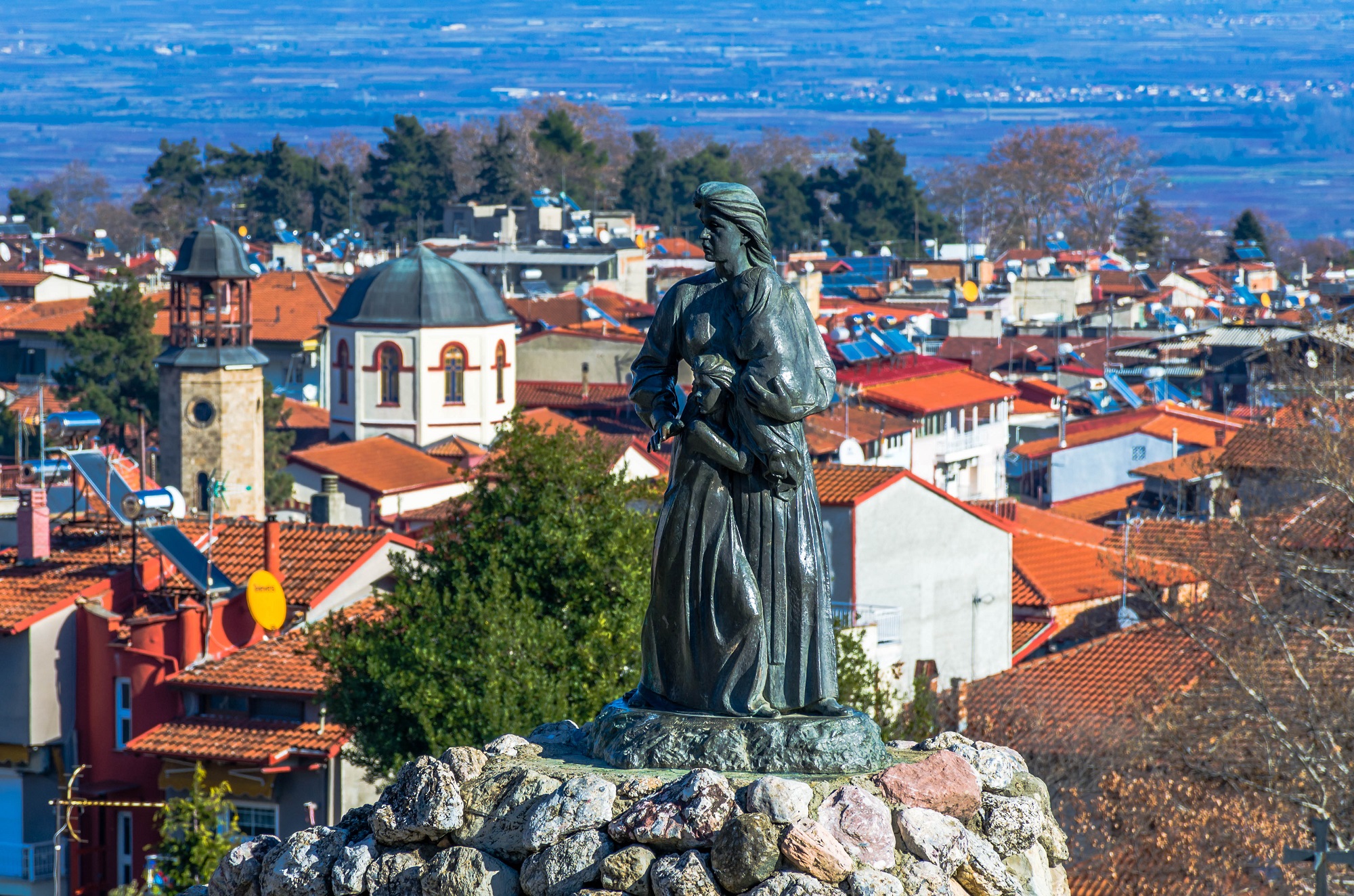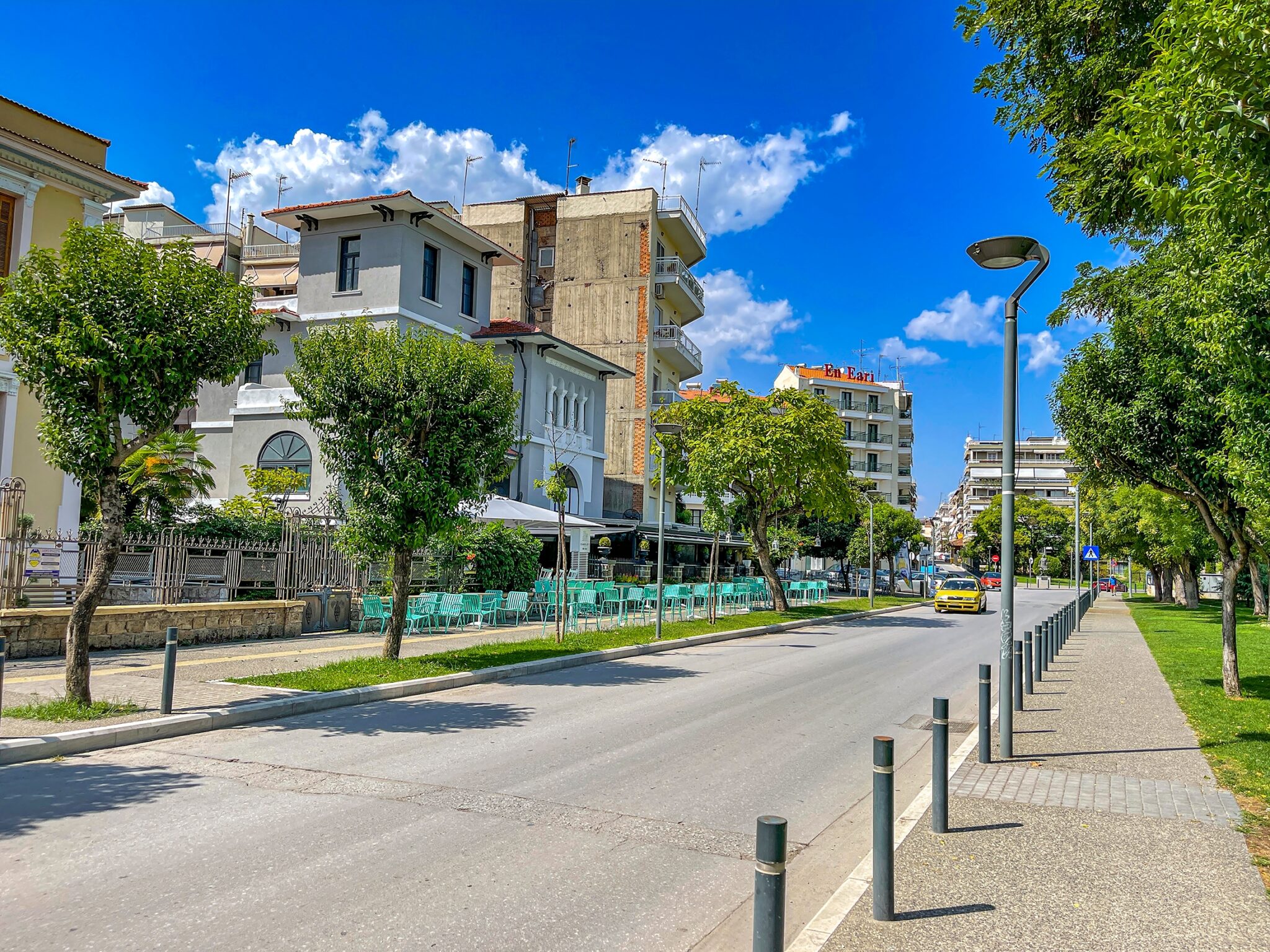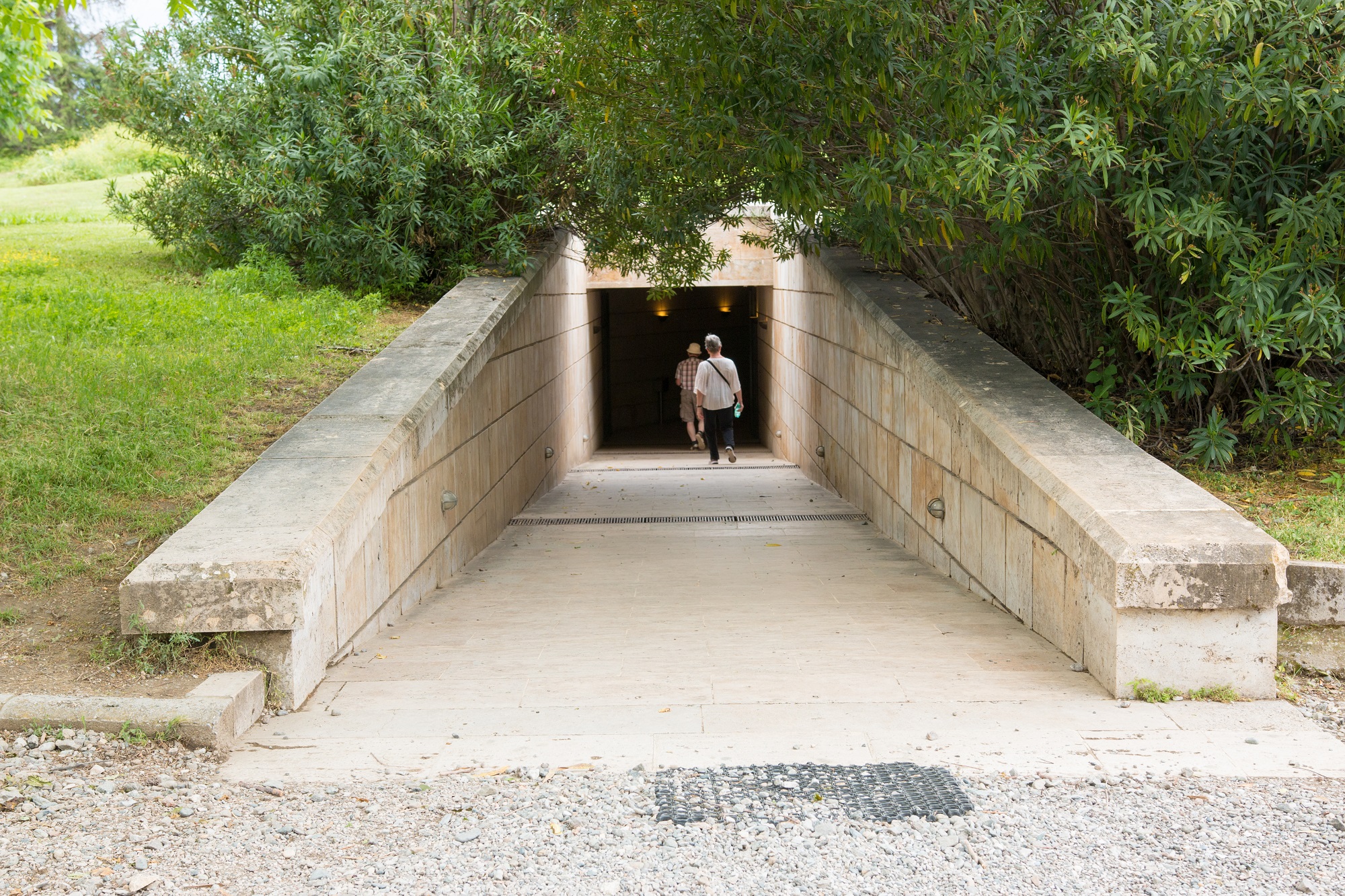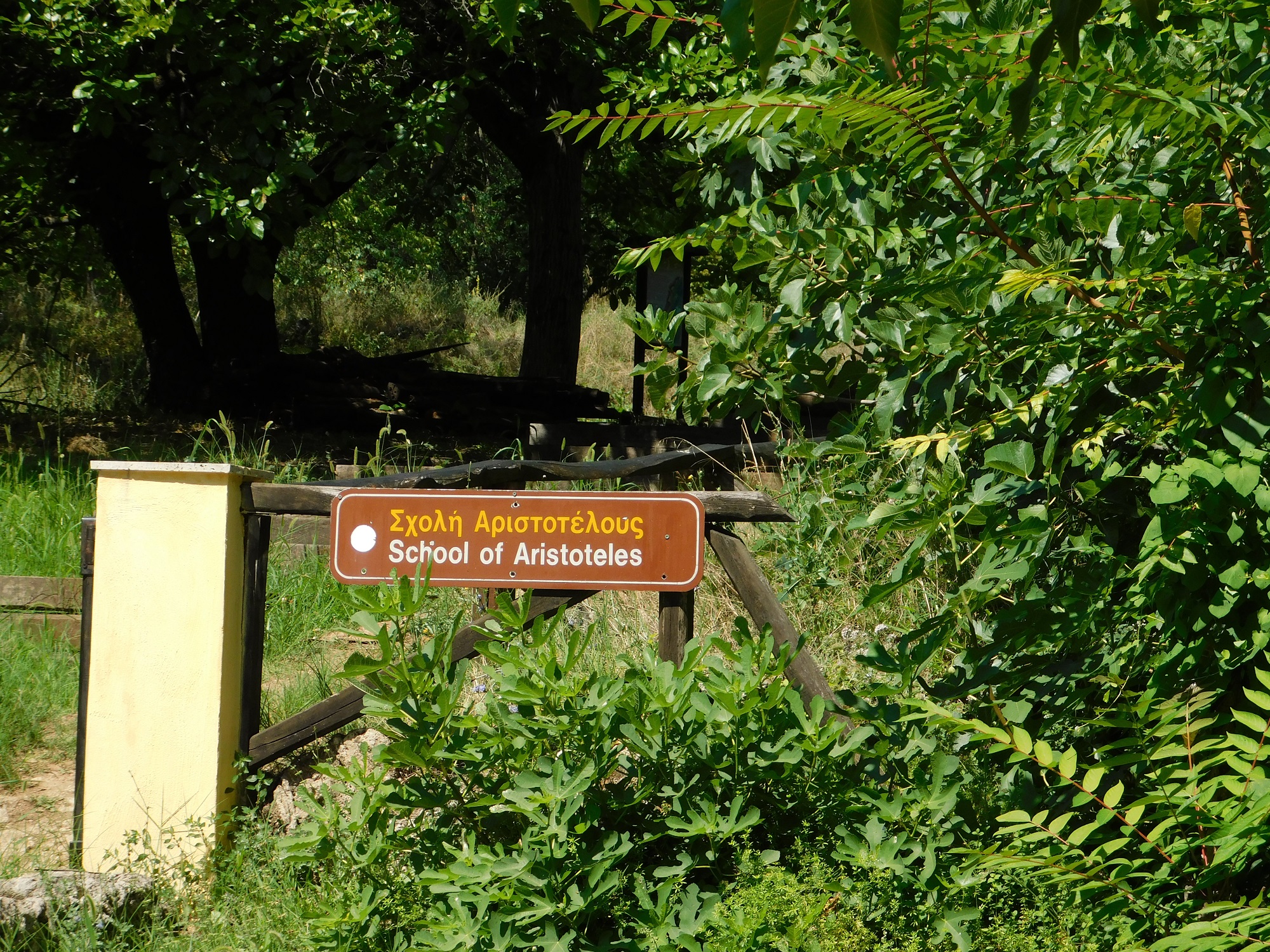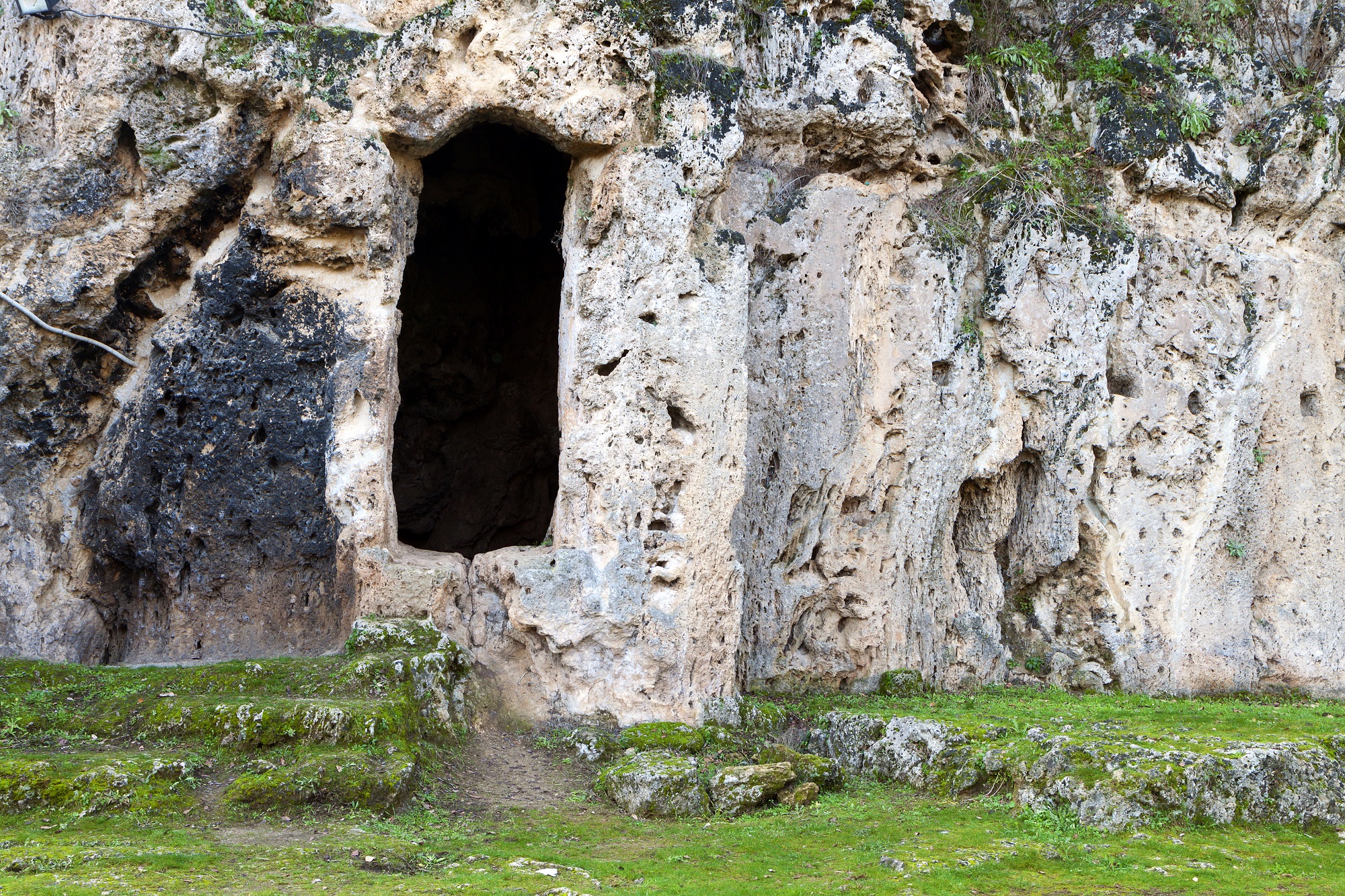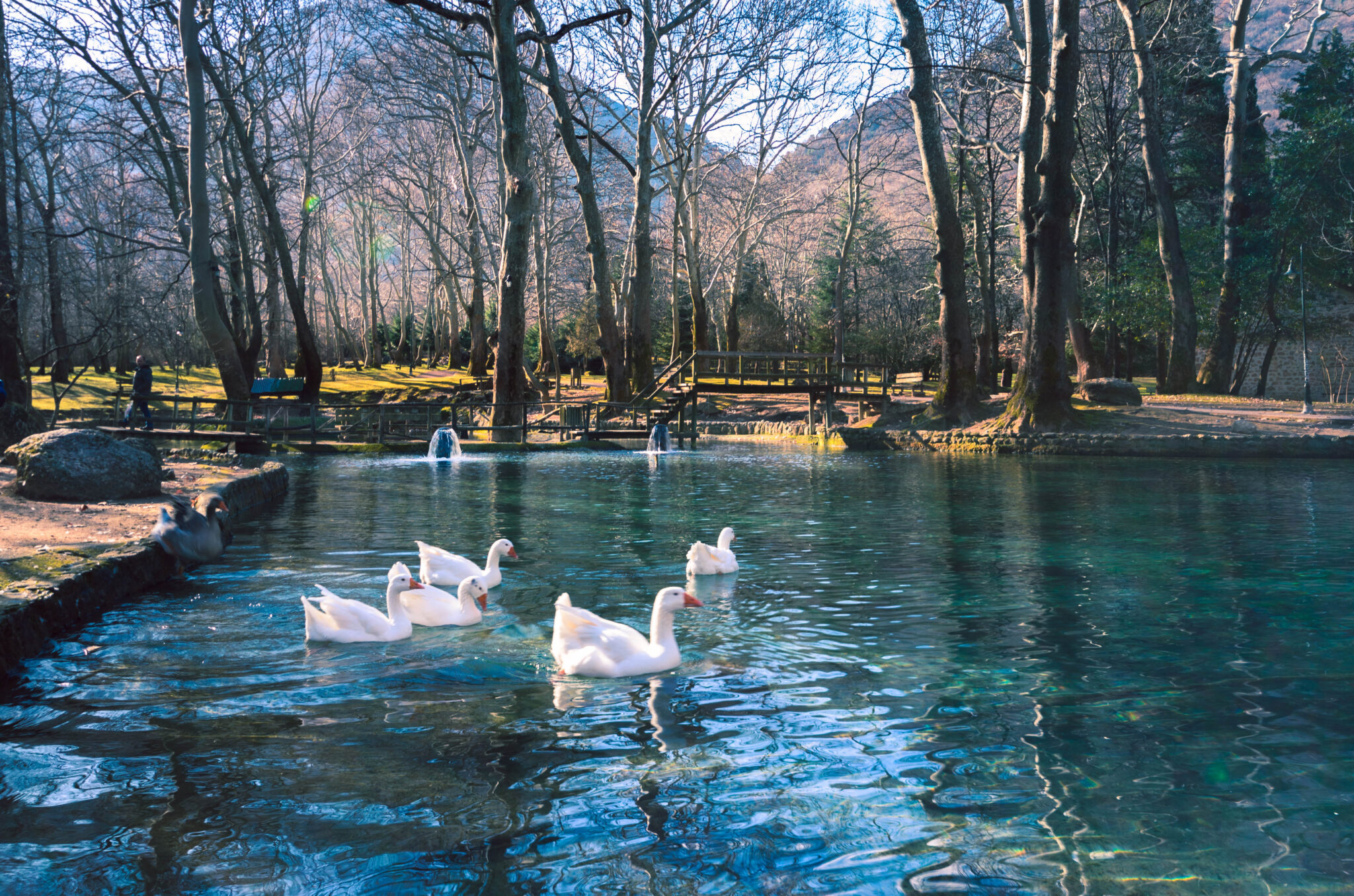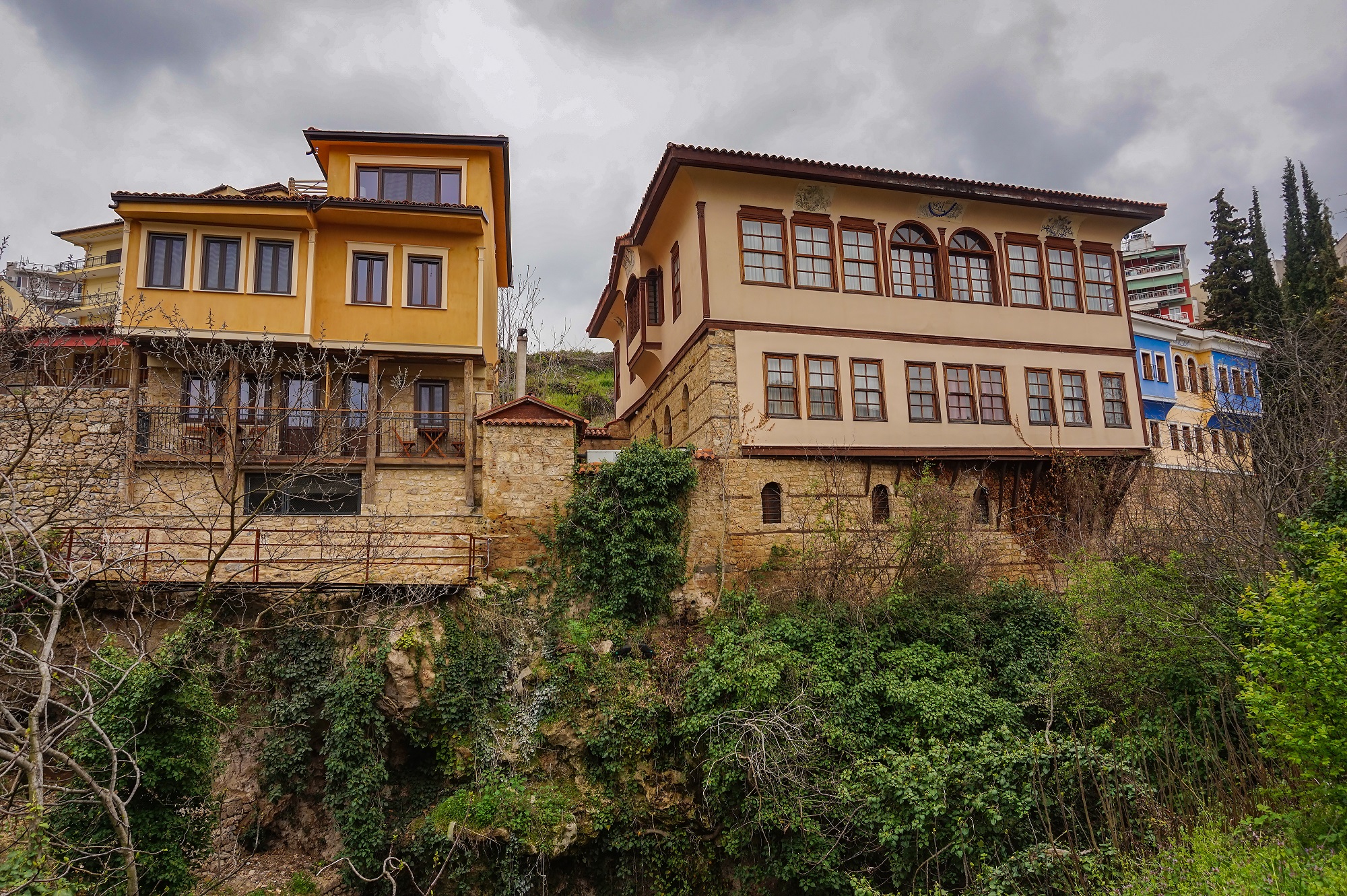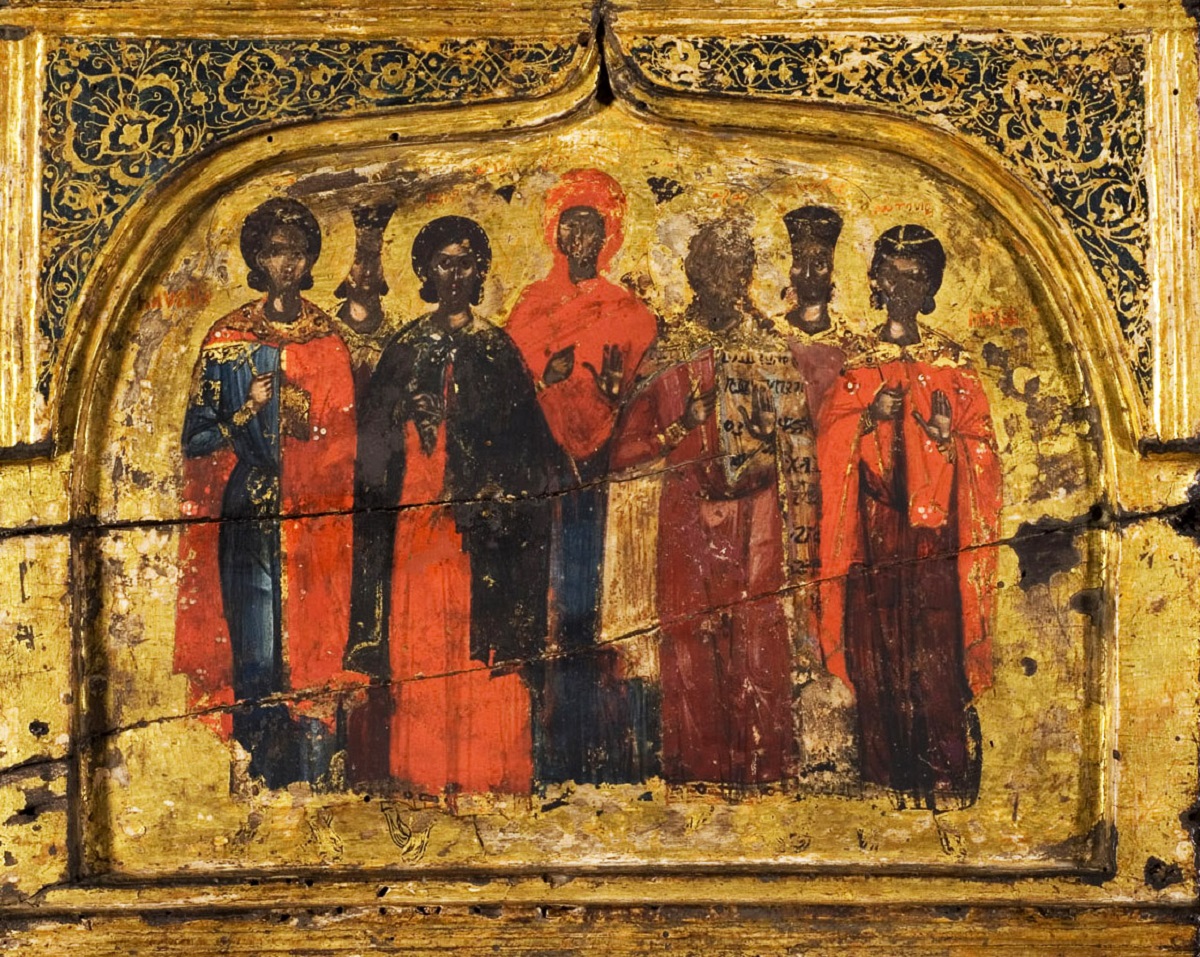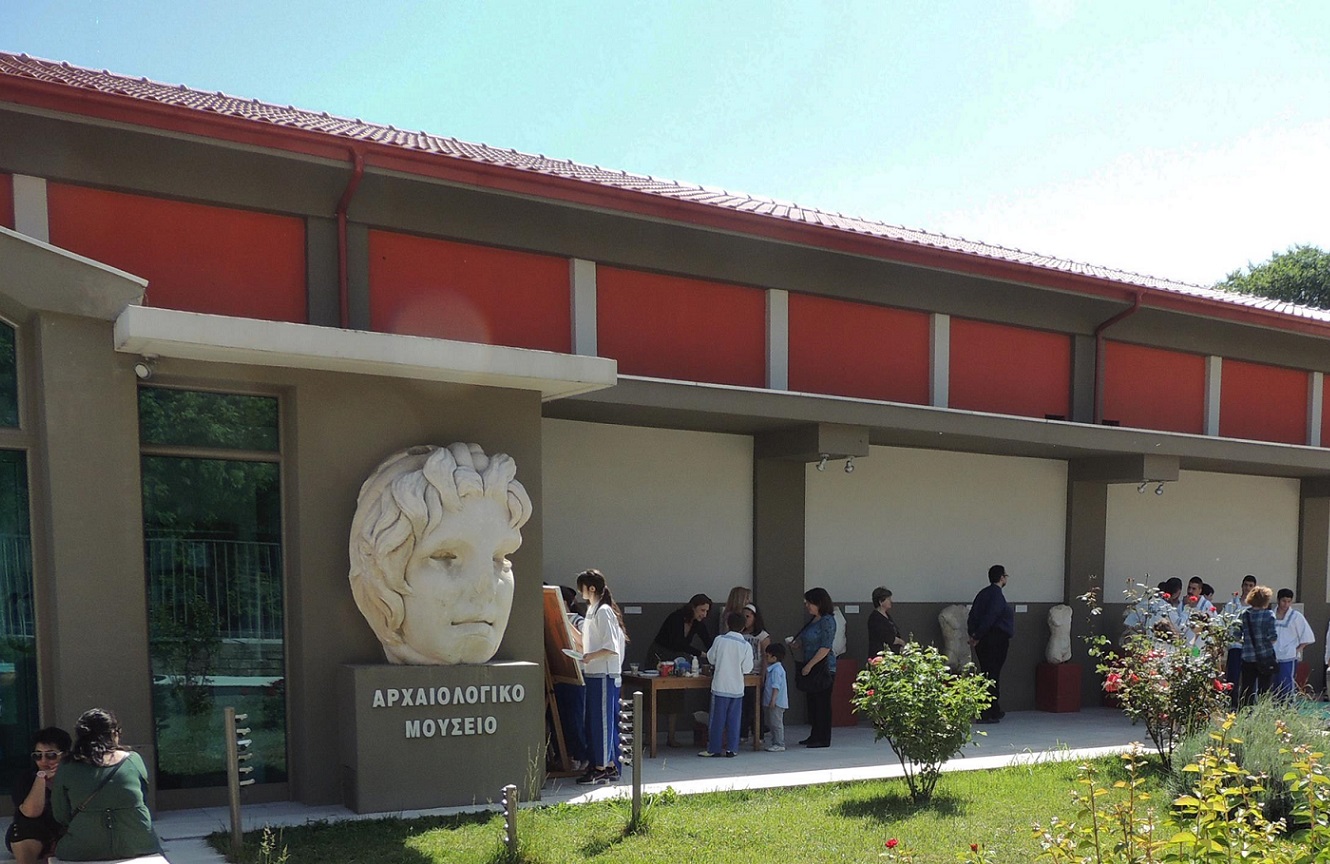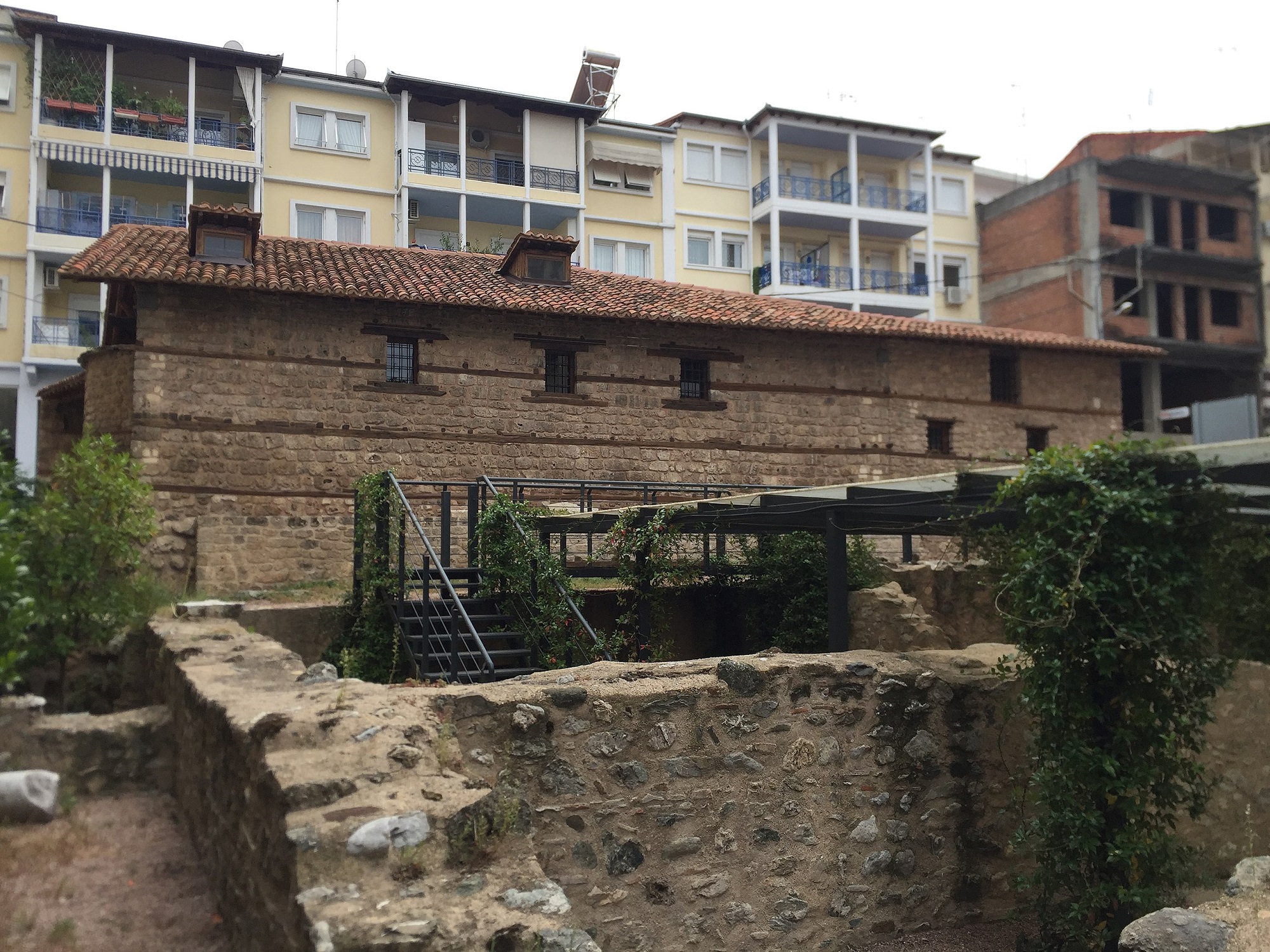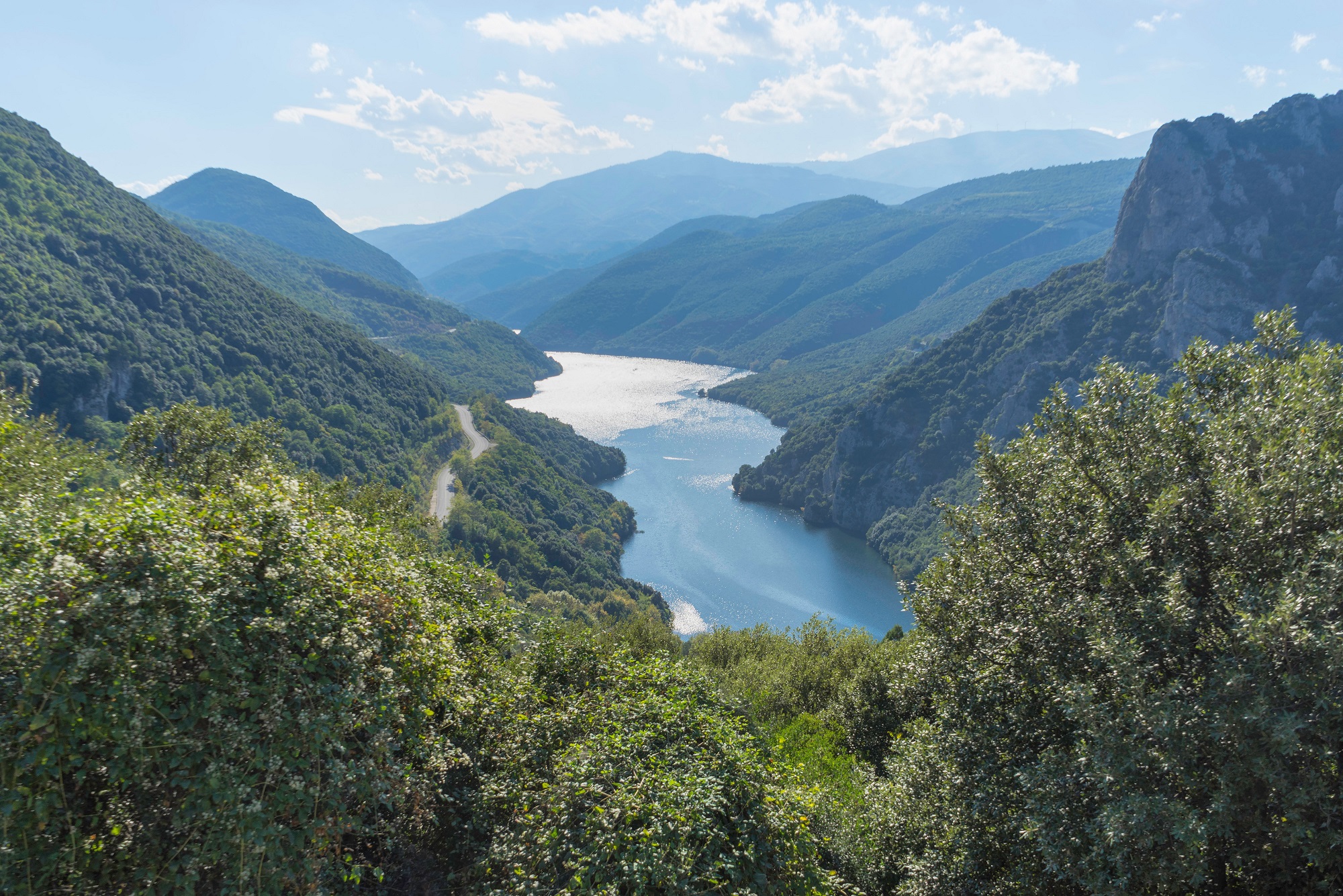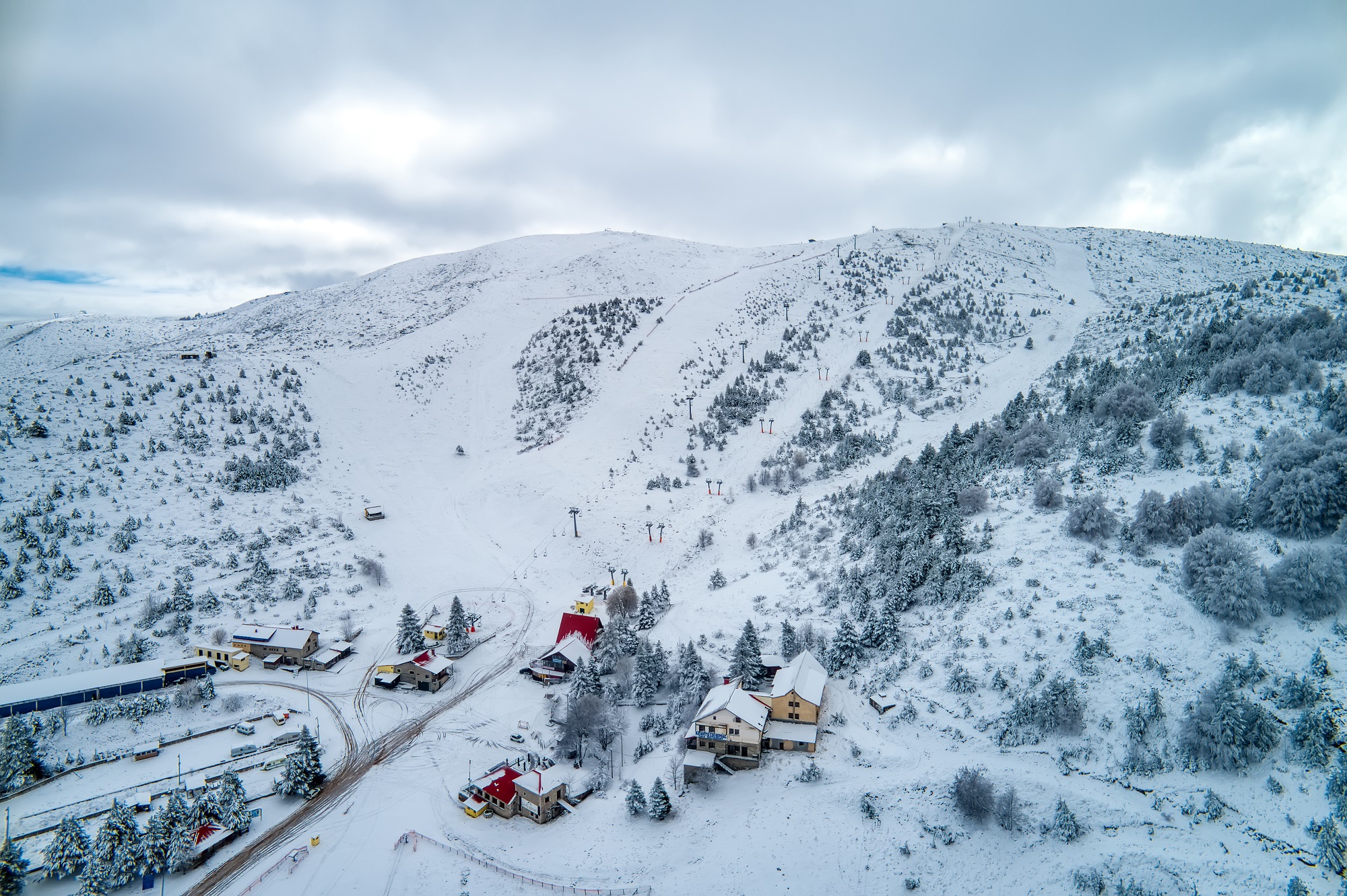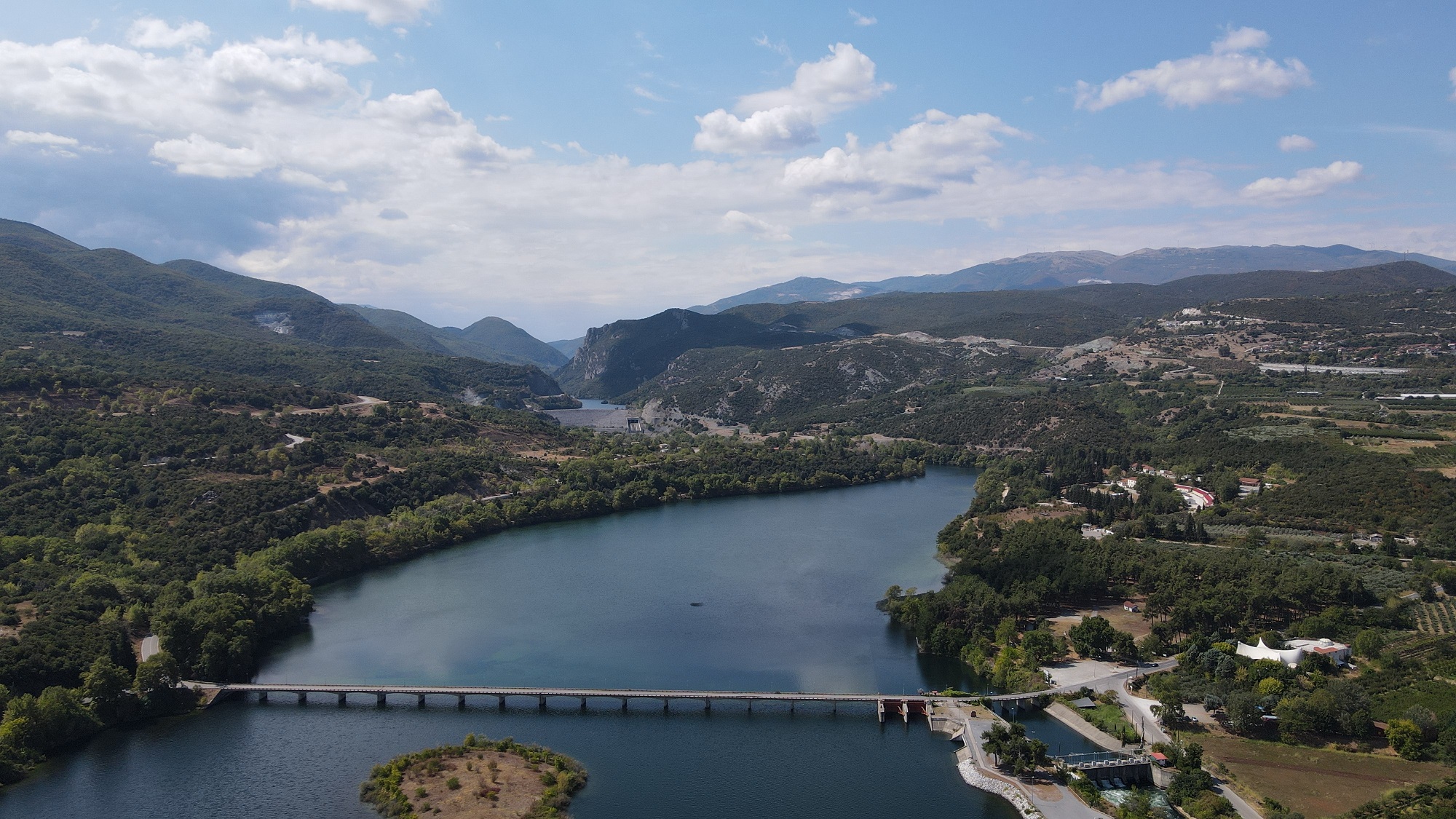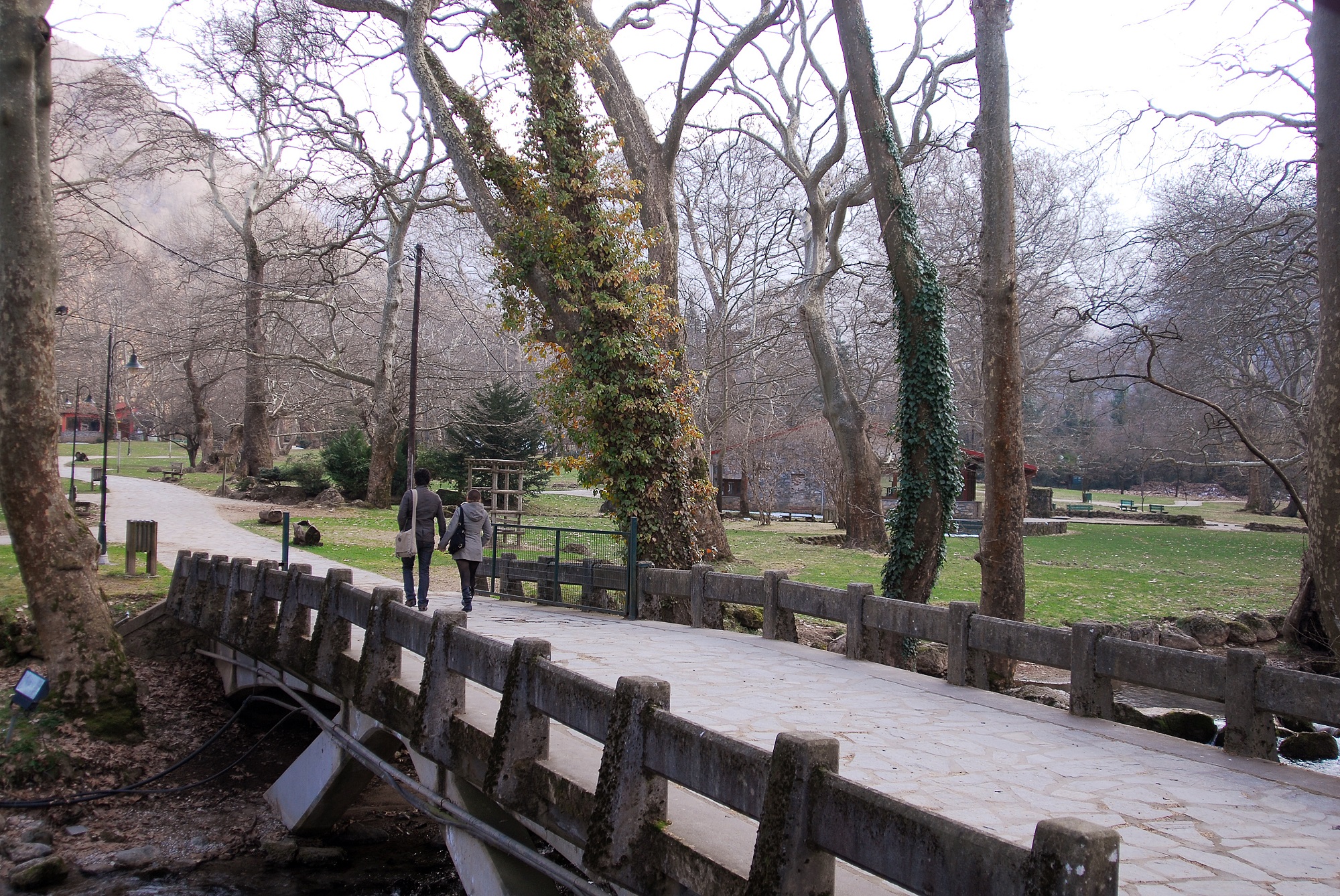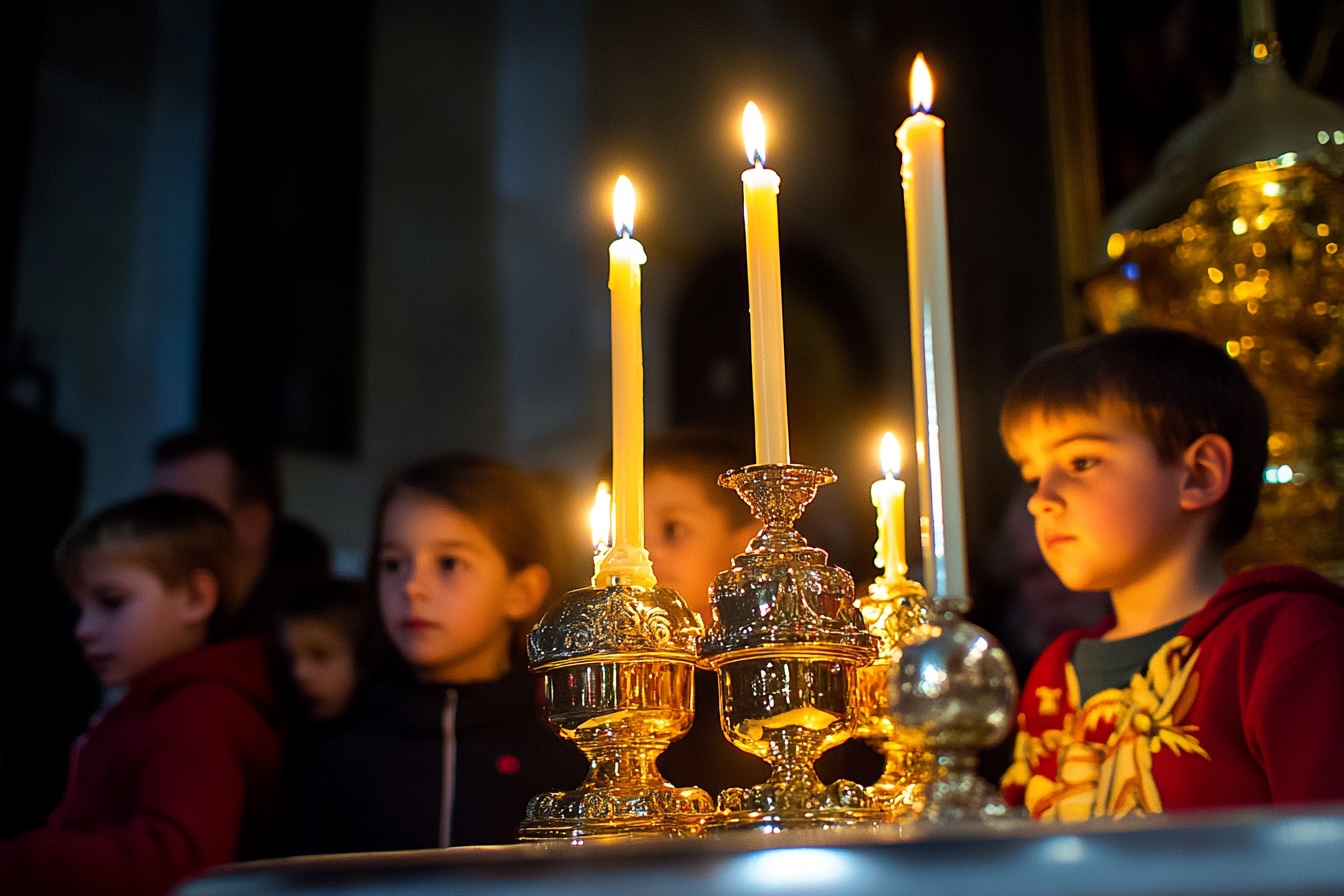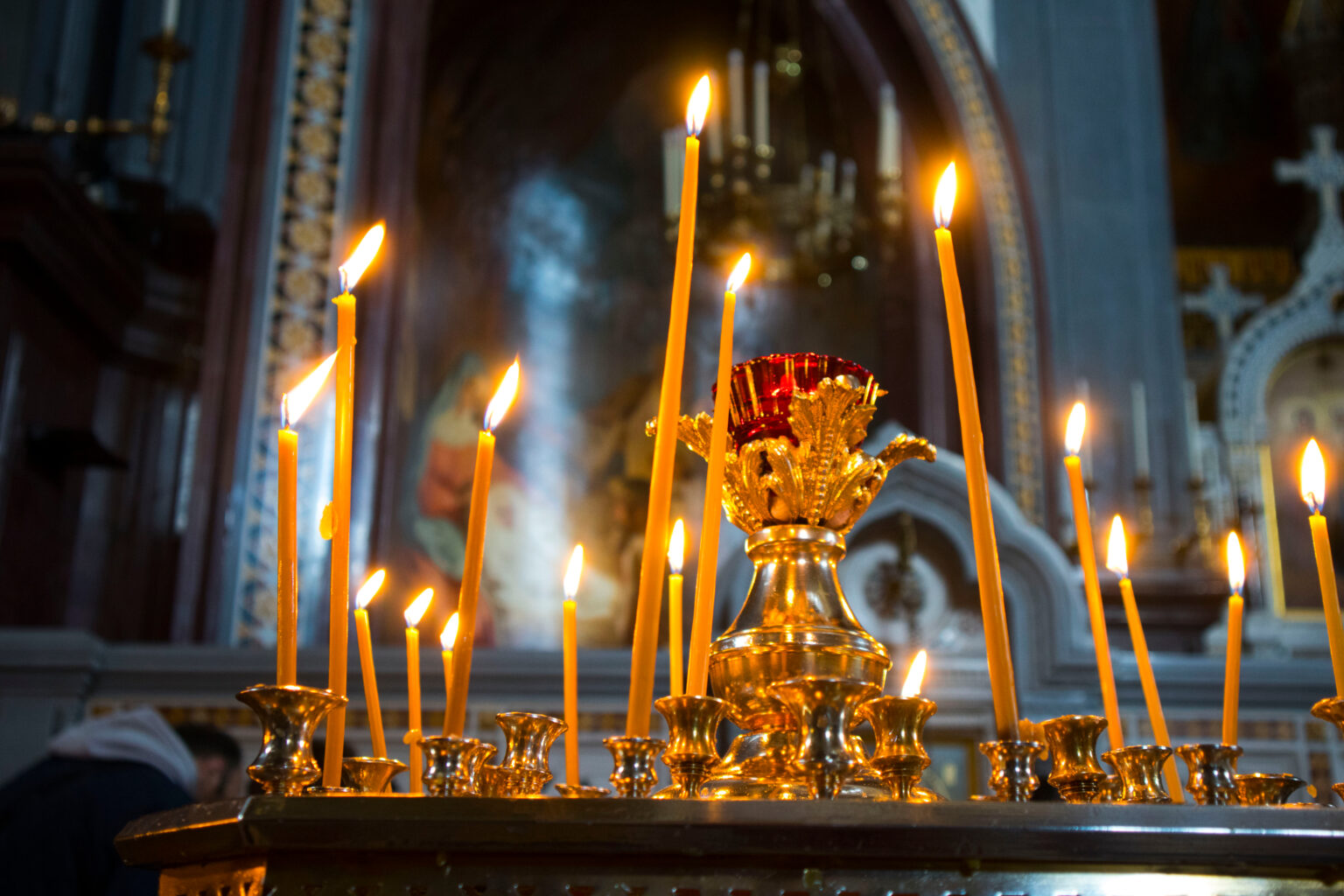The region of Imathia is like a giant archaeological site. The wider area between Naousa and Veria is filled with treasures: from Aigai– the ancient capital of Macedonia – and the royal tombs in Vergina, or the tombs of Mieza and the School of Aristotle, to the contemporary museums and the Jewish Synagogue in Veria.
In addition, Imathia is also a place in central Macedonia full of natural beauty, that you can explore in various ways, for example, skiing, hiking, climbing, cycling, or even paragliding.
We’ve compiled a list of the most important sights, as well as the best activities that are worth trying in this unique destination. However, if you have time, it’s worth going beyond such a list, for example exploring the mosques of Veria, or visiting the Vlachogianneio Museum of Modern History and Art, or the Folklore Museum of Naousa.
Important note: make sure you try the famed local wines of Naousa, as well as the famous ravani (traditional semolina cake with syrup) of Veria before you head home.
Sights
The Aigai archaeological site and the Museum of the Royal Tombs
Aigai was the capital of ancient Macedonia but now we call the area “the archaeological site of Vergina” since it’s located very close to the town of the same name. The site is about 800,000 m², including the royal palace, the temples, the theatre, as well as the necropolis. It’s one of the most important archaeological sites in Europe and has been named a UNESCO World Heritage Site.
The palace is located in the western part of town, in a prominent spot so that it could be seen from everywhere. It’s an imposing building of about 9,000 m², big part of which has two levels, and it had all the amenities and comforts of the time. The marble thresholds of the triple royal entrance survive, as do parts of the pebble mosaic floor. The ancient theatre, along with the most important temples and the rest of public buildings, is found in the northern side, a bit further down the way. The Macedonian kings were buried in the valley on the northern side.
The tomb of Philip II stands out in the necropolis; it is large, distinctively Macedonian, with two chambers and its façade resembles a temple. It has a decorative frieze with triglyphs and metopes whiles it also has a higher Ionic frieze with an amazing fresco of a royal hunting scene. There are tree equally impressive clusters in the same area: the cluster of the Temenids, in the south, the cluster of the Queens with the tomb of Eurydice, and the Heuzey-Bella cluster in the east, containing five monumental Macedonian tombs and three cist tombs.
The Royal Tombs Museum has been built in such a way so as to embrace and integrate the site while at the same time protecting it. In essence, it was built over and around Philip II’s burial cluster, resembling a hill. There, you will see all the objects that were buried with the dead, and most importantly the golden larnax, weighing 11 kg, containing Philip II’s ashes, as well as the famous 16 rayed Vergina Sun– the symbol of the Greek kingdom of Macedonia. There’s also the king’s golden wreath that consists of 313 oak leaves and 68 acorns (it weighs 714 gr), a golden and ivory decorated ceremonial shield, another golden larnax with a 12 rayed Vergina Sun containing the bones and the crown of a young woman (probably Meda), as well as a silver urn containing the bones of a young person, that belongs to Alexander the 4th, the son of Alexander the Great and Roxane.
Info
Opening hours: until March 31, 2022, Wednesday to Monday 09.00-17.00, www.aigai.gr
Archaeological Site of Ancient Mieza
In the wider area of ancient Mieza, very close to Naousa, you’ll also find the archaeological site of Nympheon, at the location Isvoria, which has been identified as the School of Aristotle. This is where Alexander the Great was taught until 340 B.C., together with the offspring of the aristocratic families of Macedonia, learning about philosophy, poetry, math and natural sciences.
The School took up a large space, that has not been searched in its entirety. What you can see if you visit, is the ruins of an Ionic portico, and three natural caves where the Nymphs were worshiped. Throughout the grounds there is a path on which it is said Aristotle enjoyed walking and talking.
The Mieza site also includes the remains of the ancient town, as well as of a theatre that could seat around 1,500 people. In addition, there are some remains of a 2nd century Roman mansion in the Baltaneto area, as well as mosaic floors of another Roman house in the location Tsifliki. The most famous findings of its necropolis are the four Macedonian tombs of Lefkadia. Of the four, only two are open to the public: the Tomb of the Palmettes/Flowers dating to the first half of the 3rd century BC – one of the most impressive and well-preserved in Mieza – and the 4th century BC, so-called Tomb of Judgement, that stands out due to its size. Its name comes from a painted representation of the judgement of the dead.
Due to the pandemic the tombs have been closed to the public for about a year and a half since the materials don’t permit disinfection. However, the guidelines change constantly, so if you want to visit them, check with the Ephorate of Antiquities of Imathia (0030 2331029737).
Information
Admission to the theatre and Nympheon is free
The Agios Nikolaos national park
Just outside the town of Naousa, you’ll find the Agios Nikolaos national park: a lovely 60,000 m² park that river Arapitsa crosses. It’s filled with century-old plane and linden trees, wooden bridges, founts, an artificial fishing lake with trout, ducks and geese, recreation and sports areas that all comprise a unique place that is worth visiting for a laid-back walk.
Info
Free admission
The Jewish Synagogue
In Veria you’ll find the oldest synagogue in northern Greece. It’s housed in a stone building in the centre of the Jewish neighbourhood. Behind the building the Mikveh – the sacred bath – still survives. The Synagogue has been in its current state since 1850, and was in operation until May 1943, when the majority of the Jewish community of the town was sent to Nazi Germany’s concentration camps. The interior is particularly interesting with the ornate painted wooden ceilings, the elaborate mosaic, the bimah and the holy ark.
Information
Opening hours: Monday to Sunday 12.00-15.00 with advance booking at the department of tourism of Veria (tel. 0030 2331350630, 0030 2331350608).
Veria Byzantine Museum
The Byzantine Museum of Veria is also worth a visit. It’s housed in the Markou watermill – an imposing building of the early 20th century. Its collection includes Byzantine, post-Byzantine and Ottoman exhibits in three different floors. You’ll have a chance to see a rich collection of icons, frescos, mosaic floors, manuscripts, coins, pottery, engravings etc. The exhibits include two Ottoman houses that are within the grounds of the museum.
Information
Opening hours: until March 31, 2022, Wednesday to Monday 09:00-17:00, www.byzantine-museum-veria.gr
Archaeological Museum of Veria
Most of the findings are from the Hellenistic and Roman period. In the first hall, you’ll see burial offerings from the Hellenistic times like pottery, weapons and jewellery. In the second hall, there are sculptures, inscriptions, vessels and figurines of the same period, while in the third hall there are sculptures, portraits, jewellery and figurines from the Roman times. The huge marble Medusa head, at the entrance of the museum that used to be in the northern side of the ancient walls of Veria is impressive.
Information
Opening hours: until March 31, 2022, Wednesday to Monday 09:00-17:00
The archaeological site of Agios Patapios
It’s an open spot that used to be the centre of ancient and early Christian Veria. The ruins of a 4th century Baptistery with a marble baptismal font, that seems to have been part of an older Roman building, still remain. Part of a 5th century basilica, an underground arch-roofed burial structure, and rare mosaic floors also survive. They are all located in the surrounding area of the post-Byzantine church of Agios Patapios that was built in the 16th century.
Information
Free admission
Activities
One thing is sure in Imathia: you won’t get bored. Apart from the variety of interesting archaeological sites Imathia has to offer, it’s also ideal for a wide range of sports. The area of Naousa is also well-known for its wines – in fact you can visit some of its wineries (you can find more information on the Winemakers of North Greece website).
Ski
Imathia has two of the most beautiful ski resorts in Greece, on the slopes of mount Vermion, Seli and 3-5 Pigadia near Naousa. The Seli ski resort is located at 1,530 m altitude and is about 20 km from Naousa and 25 km form Veria. It’s been open since 1934 when the first Panhellenic Games were held. It has one airlift, five surface lifts, three baby lifts and tracks of medium difficulty.
The 3-5 Pigadia ski resort is located on the other side of Naousa and recently re-opened under new management, aiming to be open as a recreational area throughout the year. It has one air lift, four surface lifts and a baby lift, tracks for every level of expertise, while it also has a cross-country skiing track. One of its great advantages is its integrated artificial snow system.
Information
Motocross routes
For those who love motor sports and in particular motocross, mount Vermion and the Pierian mountains have some forest roads ideal for it. There’s also a motocross park just outside the village Tripotamos.
The banks of Aliakmonas river in Veria. Photo: Shutterstock
Climbing
The best-known climbing field is that of Timios Prodromos, near Veria, over the banks of the river Aliakmonas. Another decent one is the one at Rizomata, at the location Gkouma. In the Naousa area the Hristopoulou-Boudola field, at the Krasta gorge is also very interesting.
Air sports
There are various locations where you can go hang-gliding or paragliding. The most famous ones are 3-5 Pigadia, Makrohori, Palatitsa and Profitis Ilias in Rizomata.
Hiking – Climbing
Imathia offers great hiking routes mostly on and around mount Vermion – that has over 70 km of marked trails. One of the most interesting paths crosses the forest of Xerolivado and goes up to Xerovouni. Also, the route through the forest of Kastania, starting at the Seli ski resort up to the Asourbasi peak, at 1,874 m altitude, as well as the route around the artificial lake of the Aliakmonas dam are both really nice.
The routes from the Agios Nikolaos national park towards the 3-5 Pigadia ski resort or to the Mountaki peak are also interesting. The 40 km European E4 path also crosses Imathia and goes through magical oak and fir forests and reaches 3-5 Pigadia, Seli and Panagia Soumela.
Mount Vermion is also ideal for mountain biking, with amazing trails among verdant landscapes. Start from Veria or Naousa towards the Seli ski centre, or ride on the Kastania paths. Note that there are two refuges, one at 3-5 Pigadia, and one at Kato Vermio. You can spend the night there and enjoy the mountain.



